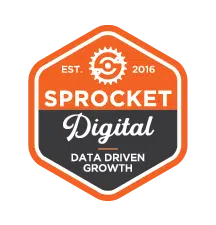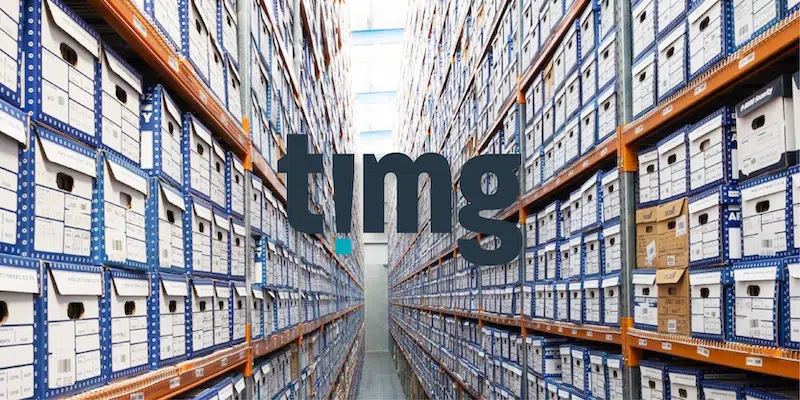
The SEO Checklist:
5 Key Steps to Boost
Your Website’s Ranking in 2025
SEO isn’t dead. Far from it. But it has changed, evolved, and become a lot smarter than in the days when keyword stuffing and spammy backlinks were enough to make Google love you. Now, staying at the top of search rankings requires both technical know-how and a touch of creativity. In 2025, if you want to keep your website front and centre, you need a strategy built on relevance, genuine value, and a little bit of hustle. Fortunately, we’ve got a no-fluff roadmap to boosting your rankings. Let’s get started with our top 5 SEO steps to stay organically relevant.
Mastering Keyword Research
If your approach to keyword research is still “stuff and pray,” we’ve got bad news: it’s not 2010 anymore. For 2025, it’s about truly understanding what your audience wants. Search behaviour has shifted—voice search is more popular, people type longer, conversational queries and user intent is everything. If you want to rank, you need to dig deep.
For example, your audience isn’t just searching for “Restaurants Wellington.” They’re typing—or asking their voice assistant—“best vegan-friendly restaurants in Wellington open late.” That’s the kind of granular, intent-driven research you need to embrace. Tools like Ahrefs, SEMrush, and Google Keyword Planner are great starting points. But you can’t just stop at raw data. Explore forums, check out user questions on sites like Quora and Reddit, and dig into social media conversations to understand the language your audience uses. This deeper insight will guide not only your keywords but also the content you create around them.
Most importantly, keyword research doesn’t mean cramming every single phrase into a page. Instead, weave primary and secondary keywords naturally throughout your content, headlines, meta tags, and descriptions. Focus on making the content genuinely useful. If it feels robotic, you’re doing it wrong.
Writing for Real People (and Making Google Happy Too)
No one goes to Google thinking, “I hope I find a keyword-stuffed article.” People want answers, entertainment, and solutions that make their lives easier. In other words, content needs to prioritise humans while keeping search engines in mind, not the other way around. In 2025, the magic formula is simple: E-E-A-T—Experience expertise, authoritativeness, and trustworthiness. If your content doesn’t exude these qualities, it’s unlikely to soar.
Think of your content as a conversation. Make it engaging, witty, and valuable. Whether you’re writing a how-to guide, an opinion piece, or a case study, clarity is key. Break content into digestible sections with punchy headers, use short paragraphs, and keep your audience hooked with a strong narrative or unique insights. And here’s a pro tip: storytelling isn’t just for novels. Weave in stories, case studies, or relatable analogies where it makes sense—it keeps readers interested and helps you stand out.
But don’t get too caught up in the creativity. Search engines still need a breadcrumb trail. Include keywords where it makes sense—titles, headers, introductions, and meta descriptions. The aim isn’t to force it but to create something so useful, Google feels compelled to serve it up.
“keyword research doesn’t mean cramming every single phrase into a page. Instead, weave primary and secondary keywords naturally throughout your content, headlines, meta tags, and descriptions.”
Technical SEO: The Backbone of Your Strategy
Let’s pretend you’ve taken the above advice and now have some good content, witty copy, and a unique angle. That’s great but if your site takes an eternity to load. That’s it—your visitors are gone. In the lightning-fast world of the internet, technical SEO may not be as exciting as brainstorming new blogs but it is the engine that keeps your site running smoothly. It’s what lets search engines crawl, understand, and rank your pages. And in 2025, it’s more important than ever.
Start with page speed. Attention spans are getting abysmally lower, and Google knows it. If your site isn’t lightning-fast, you’ll be left behind. Research shows that the first 5 seconds of page load have the highest impact on conversion rate, and the probability of bounce increases 32% as page load time goes from 1 second to 3 seconds.
Tools like Google’s PageSpeed Insights can show you exactly where you’re lagging. Compress images, minimise code, and use a Content Delivery Network (CDN) to speed things up. If you’re using a Wix or Squarespace template to build your own website keep an eye out for ‘unused’ code. For example, if you click the text box but don’t actually type in it you might not see anything, but your website will still go through the process of loading it, wasting precious time.
With that being said, speed isn’t everything. Your site’s structure needs to make sense too. Think logical, clean URLs and an intuitive hierarchy. And don’t forget security. If your site isn’t HTTPS-secured, you might as well hand your rankings over to your competitors. Google prioritises user safety, and so should you.
Mobile-First or Bust
In case you missed the memo, most internet browsing happens on mobile devices these days. Google knows it, and that’s why mobile-first indexing isn’t just a trend; it’s the law of the land.
A mobile-friendly website means more than just squishing desktop content to fit a smaller screen. Every element—images, buttons, text—should adapt seamlessly. Test your site from a user’s perspective. If navigating requires pinching, zooming, or swearing, you’ve got work to do. Make your buttons big enough to tap, your text readable without magnifying glasses, and your navigation intuitive enough that users don’t bounce faster than a rubber ball.
Also, watch out for intrusive interstitials—aka those pop-ups that block an entire screen. They’re as annoying as unsolicited phone calls and could get you penalised in search rankings. Keep it user-first, and Google will thank you with better rankings.
Backlinks: Quality Over Quantity, Every Single Time
Think of backlinks as the digital version of street cred. In 2025, backlinks are still one of Google’s top-ranking signals, but not all backlinks are created equal. The goal isn’t to collect as many as you can; it’s to earn links from sites that matter. High-quality, authoritative links can catapult your site to the top, while spammy ones can bury it faster than a bad product review.
The best way to get quality backlinks? Be genuinely useful. Create data-driven posts, unique infographics, or content so insightful that others in your industry can’t help but link to it. Guest posting is another powerful strategy, but only if you’re adding real value and targeting reputable sites. If your “outreach” strategy involves begging every website under the sun for a backlink, you’re doing it wrong.
Need a Hand?
SEO in 2025 isn’t a set-it-and-forget-it affair. It demands adaptability, creativity, and a genuine commitment to creating value for your audience. From mastering keyword intent to getting your technical SEO spot on and refreshing content like a pro, each step is a building block toward visibility and trust.
Ready to take your website from “meh” to a traffic-driving machine? The Sprocket Digital team specialises in no-fluff, results-driven strategies that boost rankings and build lasting growth. Reach out and we’ll show you how to make Google work for you.

Grow Your
Business Today
What Our Clients Say About Us
With well over one hundred 5-star Google reviews, its safe to say we are the real deal. Client relationships and demonstratable results are our priority. If you'd like to know more, we'll even let you talk to some real clients.












